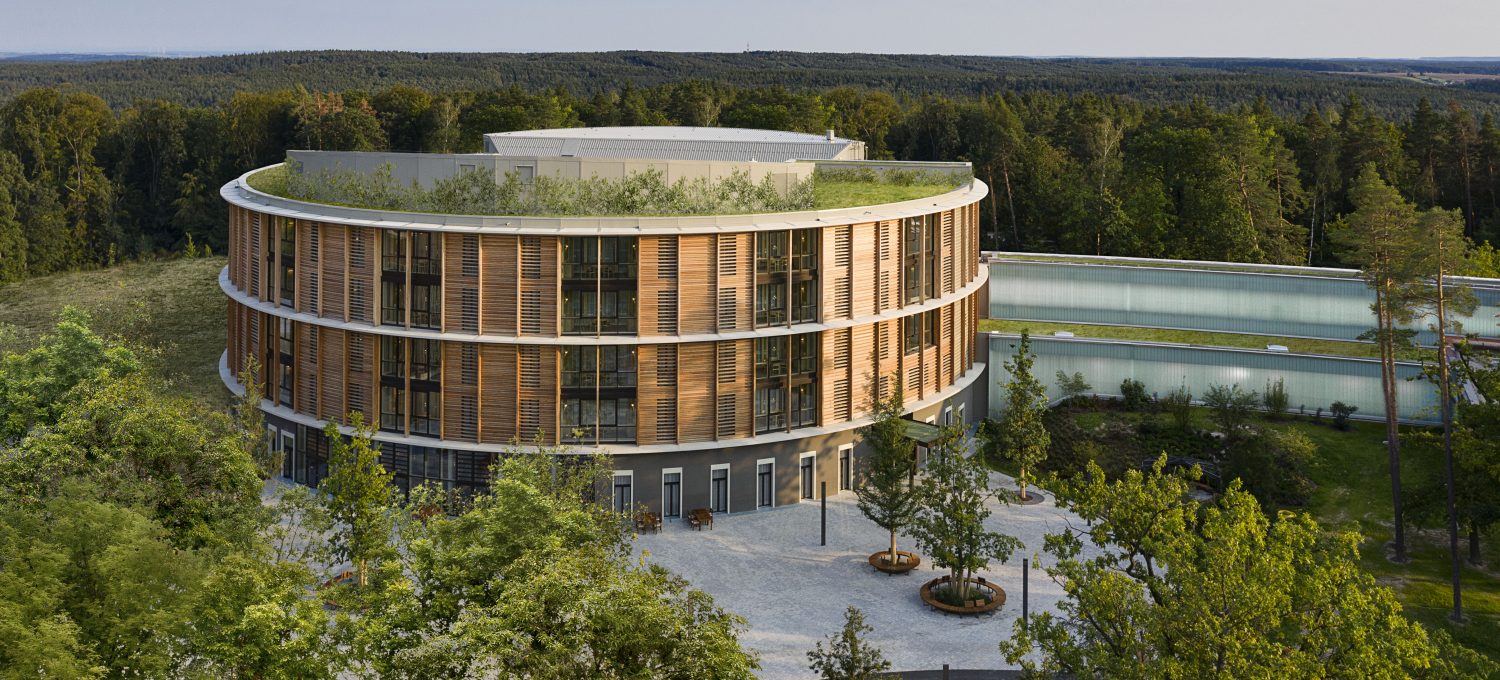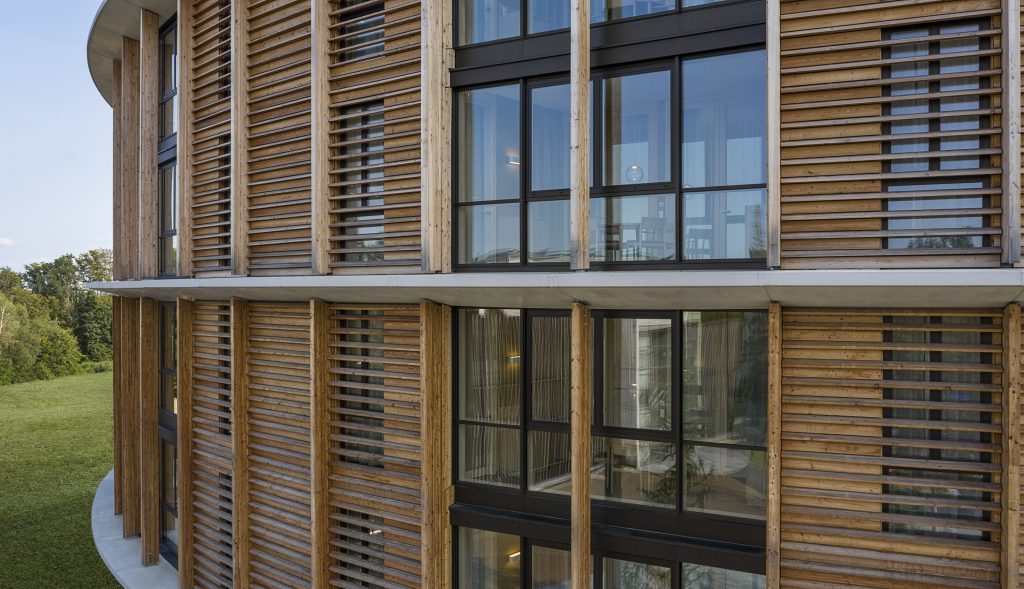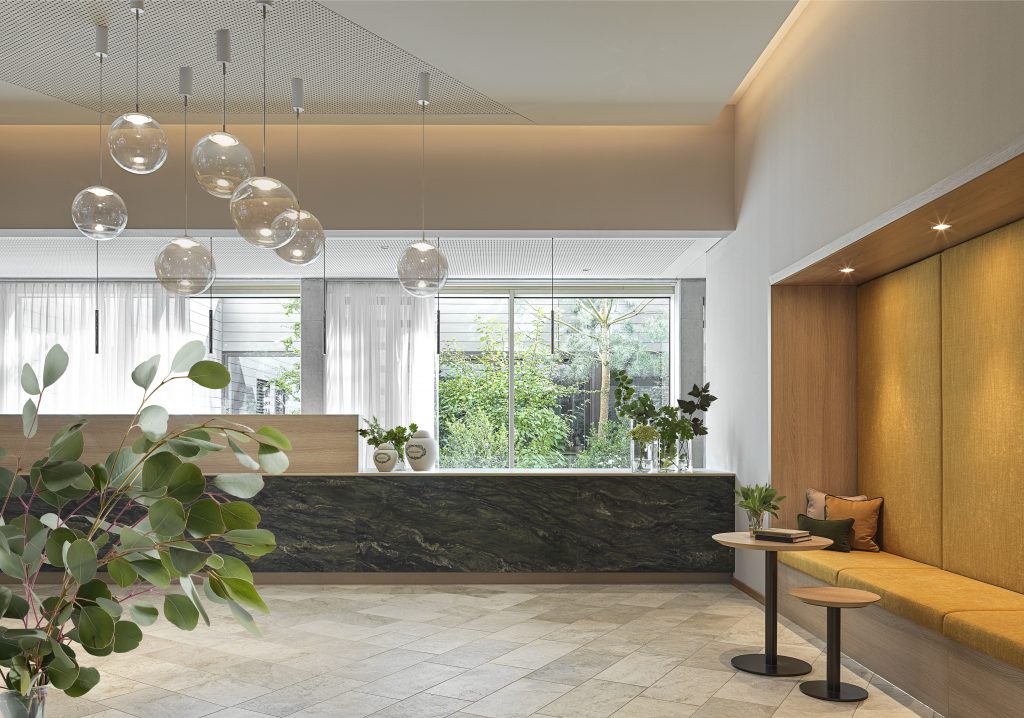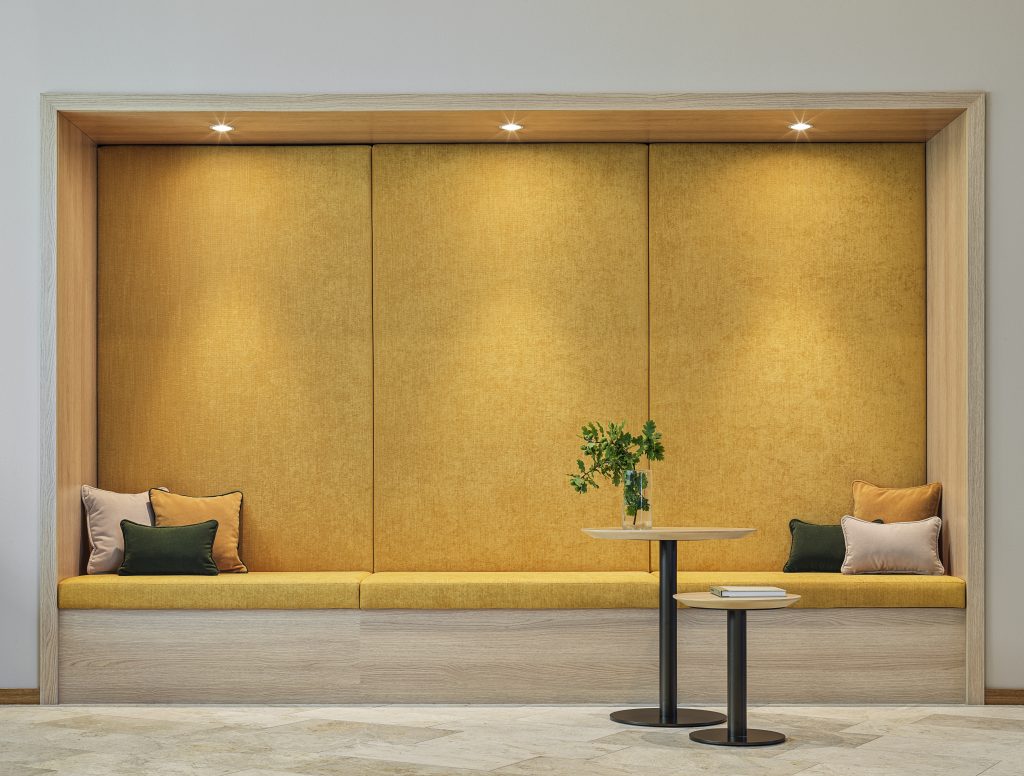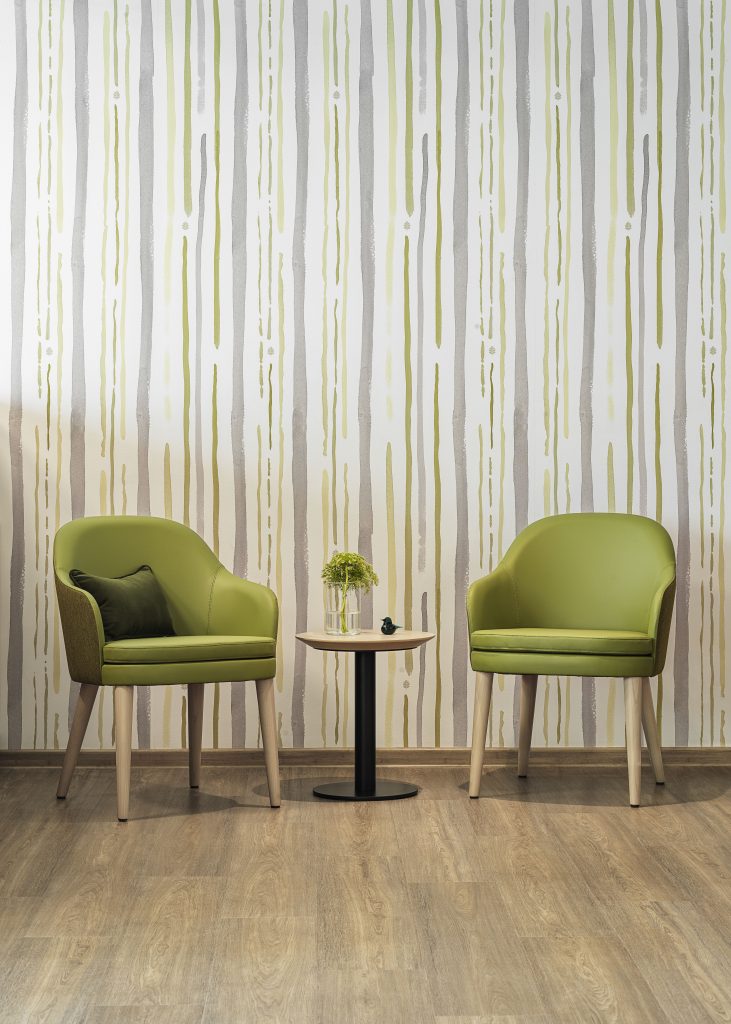Nachdem ich vor einiger Zeit mal wieder in einem lokalen Krankenhaus war (zum Glück als Besucherin), entdeckte ich zufällig Fotos der neuen Waldkliniken Eisenberg in Thüringen und – ja, ich kann es nicht anders sagen – erblasste vor Neid. Gestaltet vom südtiroler Architekten Matteo Thun, dessen Arbeiten ich sowieso sehr schätze und mit so viel visueller Kraft, dass man sich schon durch das Betrachten der Fotos gesünder fühlt. Und warum Neid? Weil ich solche Krankenhäuser hier in Bremen auch will. Und überall anders auch.
Zur Beruhigung habe ich mir dann gedacht, dass es sich bei dem kreisförmig angelegten Neubau der orthopädischen Klinik mit Sicherheit um eines dieser elitären Häuser handeln muss, das nur Privatpatienten und Scheichs aus Dubai aufnimmt. Und muss dann lesen, dass es sich um ein kommunales Krankenhaus handelt, was offen für alle Kassen ist und in dem gerade mal ein ganz paar der 246 Betten für Privatpatienten vorgesehen sind. Es geht noch weiter: Der Bau war noch nicht einmal teurer als der Standardklinikbau, wie wir ihn kennen. Zum Vergleich: Der Neubau der Waldkliniken Eisenberg soll um die 60 Millionen Euro gekostet haben. Der Neubau des Klinikums Mitte in Bremen mit 818 Betten mindestens 400 Millionen (Quelle: Weser-Kurier) oder des Klinikums Frankfurt Höchst rund 263 Millionen (Quelle: FAZ) bei 664 Betten. Das sind natürlich sehr oberflächliche Vergleiche, denn die Kliniken kann man sicher von der Ausgangslage nicht vergleichen. Trotzdem macht es stutzig, warum es die einen schaffen, neben den ganzen Must-Haves einer modernen Patientenversorgung, auch noch die Architektur so zu gestalten, dass sie eher einem Hotel gleicht und international Begeisterung auslöst. Warum für den Preis auch der Anspruch nach möglichst nachhaltigem Bauen geleistet werden konnte und warum es bitteschön auch noch hervorragendes Essen gibt?
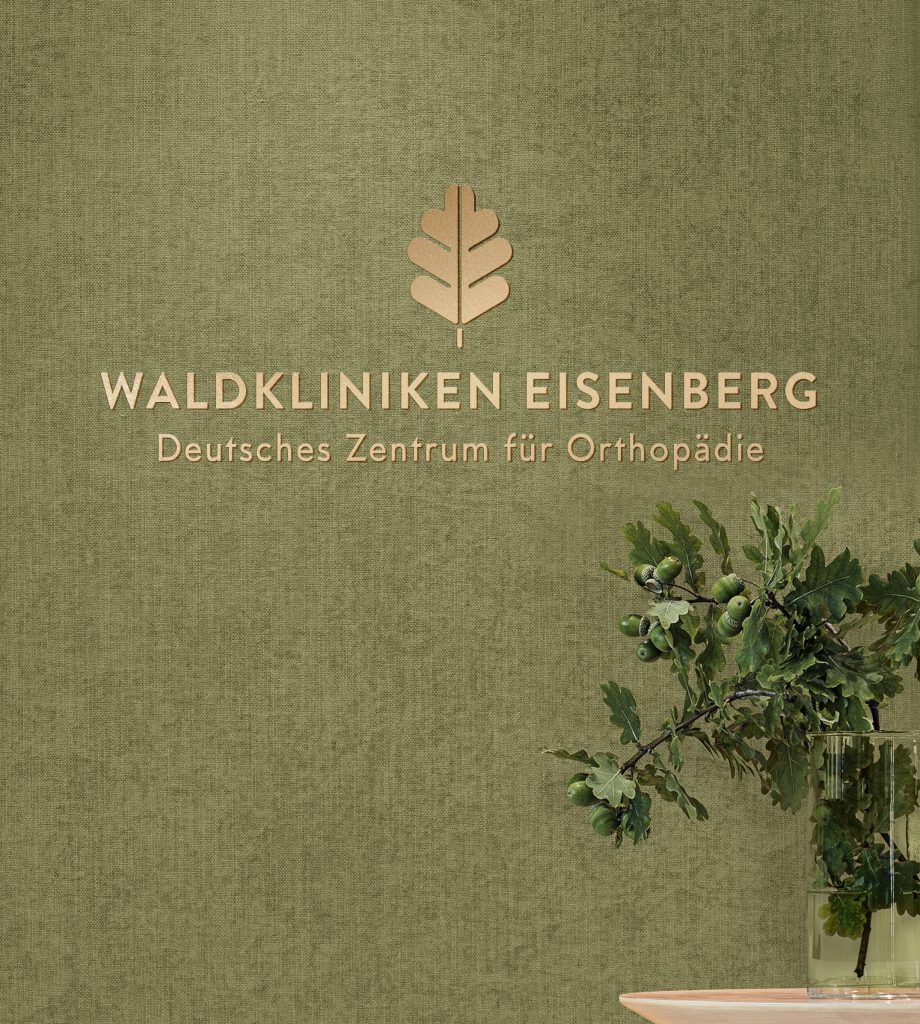
Wohlgemerkt geht es bei alldem nicht um die Qualität der Arbeit, die von den Mitarbeitenden in den Kliniken geleistet wird. Dass die Höchstleistungen in diesen verantwortungsvollen Jobs erbringen, wissen wir nicht erst seit Corona. Aber haben es nicht gerade deshalb auch diese Mitarbeitenden verdient, dass sie in einer wohltuenden Umgebung arbeiten? Ein Gebäude, was mit dem Ziel geplant wurde, dass Patientinnen und Patienten zu Gästen werden und die Aufenthaltsqualität ganz oben steht (inklusive Blick ins Grüne), das vermittelt auch den Mitarbeitenden Wertschätzung.
Allein die Idee, die 2-Bett-Zimmer in Z-Form zu planen (siehe Foto unten), schafft nicht nur deutlich mehr Privatsphäre für die Patientinnen und Patienten, sondern erleichtert beispielsweise auch das Rangieren mit Betten.
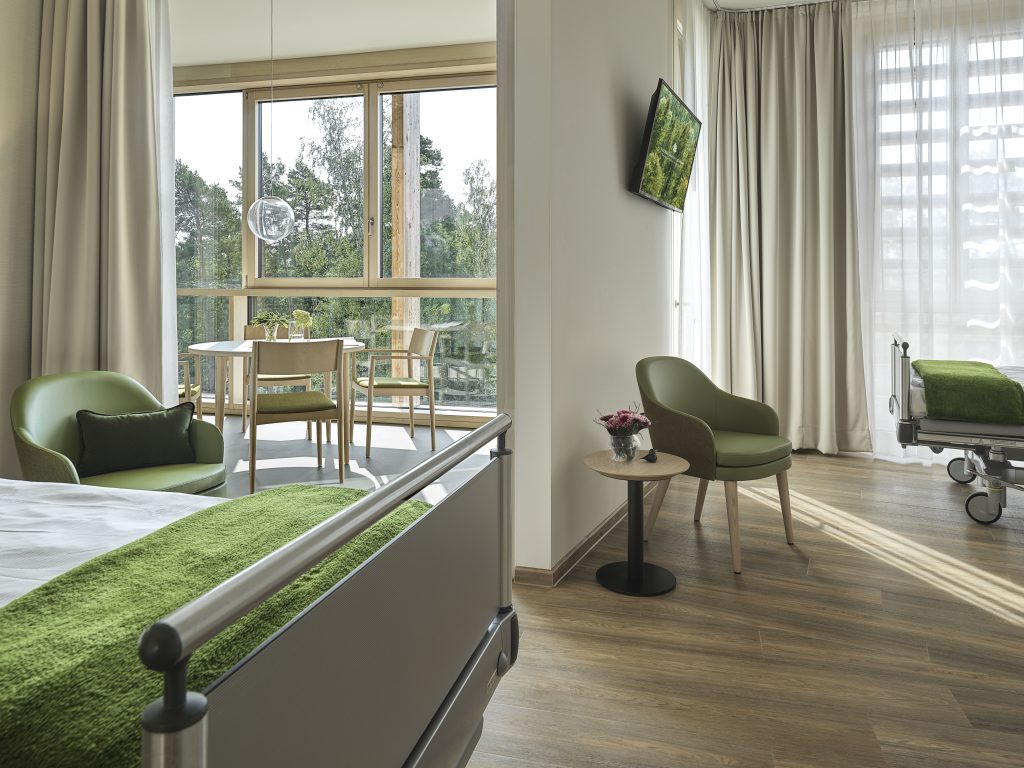
Und nun genug geschrieben. Ich schließe mit den Worten von Gerhard Matzig, der in der Süddeutschen Zeitung über die Eröffnung 2020 schrieb: Die Kliniken machen „Lust auf das Gesundwerden“ und lasse jetzt die Bilder sprechen, damit sich jede und jeder zumindest visuell ein eigenes Bild machen kann:
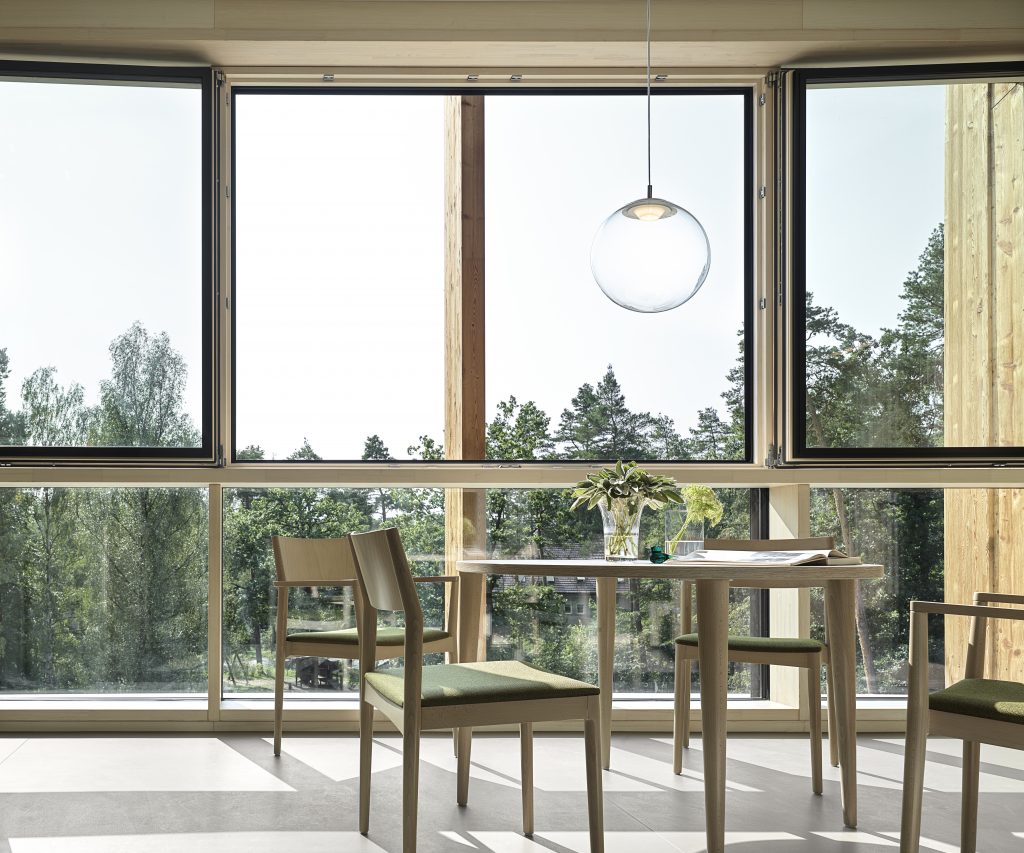
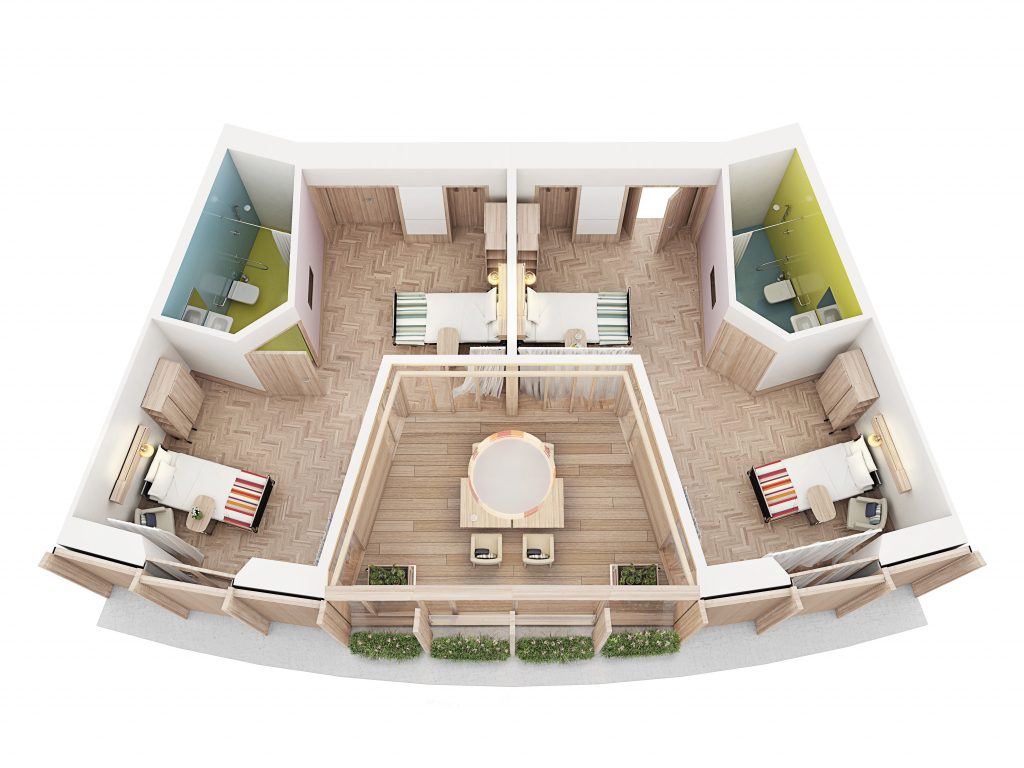
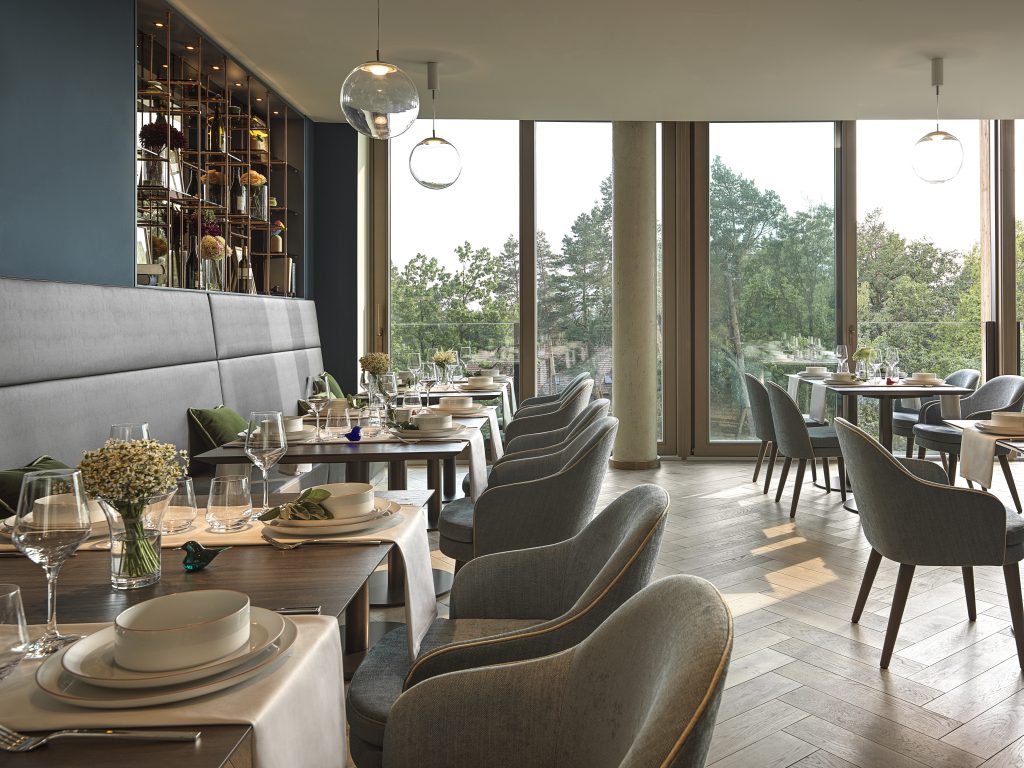
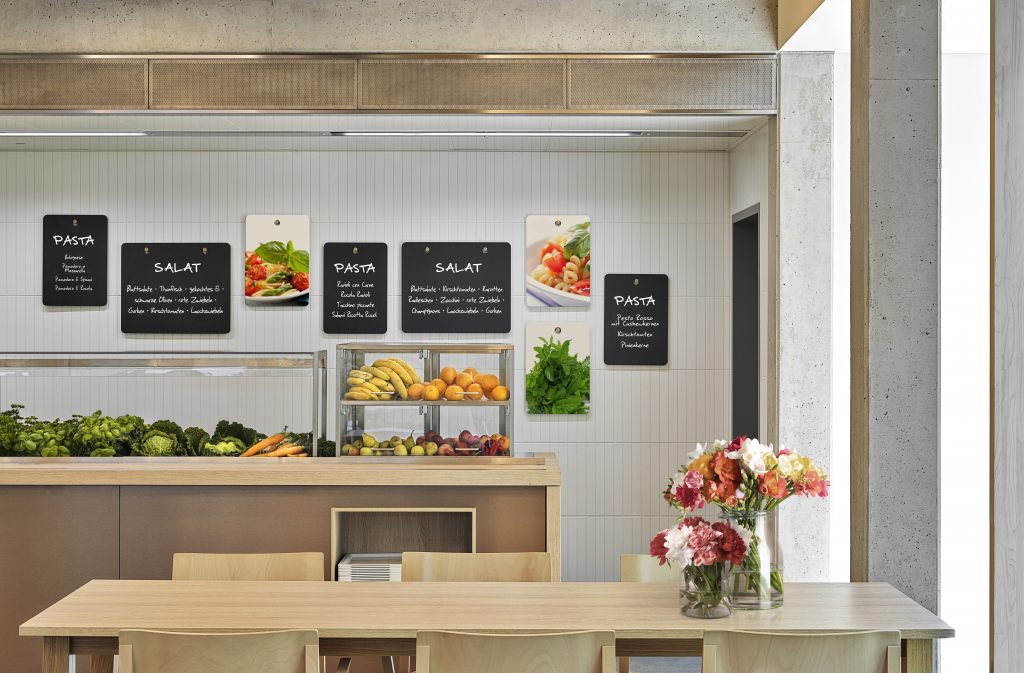
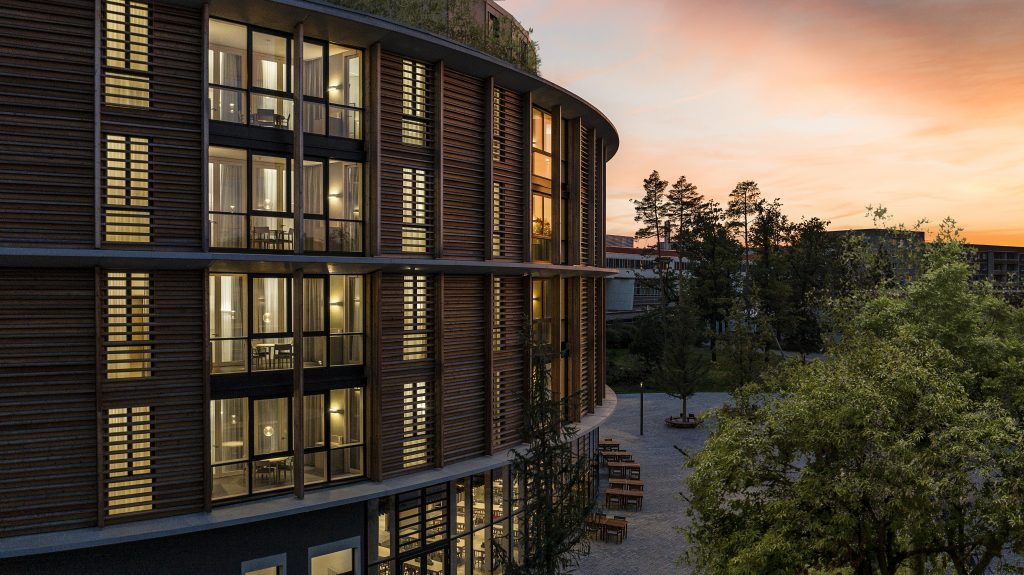
After visiting a local hospital again some time ago (luckily as a visitor), I found photos of the new Waldkliniken Eisenberg in the German state of Thuringia by chance and – yes, I can’t say it any other way – turned green with envy. Designed by the South Tyrolean architect Matteo Thun, whose work I really appreciate anyway, and with so much visual power that you feel healthier just looking at the photos. And why envy? Because I want hospitals like that here in Bremen. And everywhere else too.
To calm myself down, I then thought that the circular new building of the orthopaedic clinic must surely be one of those elitist houses that only accepts private patients and sheikhs from Dubai. And then I have to read that it is a municipal hospital, which is open to all health insurance funds and in which only a few of the 246 beds are reserved for private patients. It goes even further: the building was not even more expensive than the standard hospital building as we know it. For comparison: the new building of the Waldkliniken Eisenberg is said to have cost around 60 million euros. The new building of the Klinikum Mitte in Bremen with 818 beds cost at least 400 million (source: Weser-Kurier) or the Klinikum Frankfurt Höchst about 263 million (source: FAZ) with 664 beds. Of course, these are very superficial comparisons, because the hospitals can certainly not be compared in terms of their initial situation. Nevertheless, it makes one wonder why, in addition to all the must-haves of modern patient care, they also manage to design the architecture in such a way that it resembles a hotel and arouses international enthusiasm. Why, for the price, the demand for the most sustainable building possible could also be met and why there is also excellent food?
Mind you, all this is not about the quality of the work done by the staff in the clinics. We have known for a long time that they deliver top performance in these responsible jobs, and not just since Corona. But isn’t it precisely for this reason that these employees also deserve to work in a pleasant environment? A building that has been planned with the aim of turning patients into guests and that places the quality of stay at the top of the list (including a view of the greenery) also conveys appreciation to the staff.
The very idea of planning the 2-bed rooms in a Z-shape not only creates much more privacy for the patients, but also makes it easier to move beds around, for example.
And now enough writing. I will conclude with the words of Gerhard Matzig, who wrote in the Süddeutsche Zeitung about the opening in 2020: The clinics make people „want to get healthy“ .

Autorin: Maike Kristina Harich
Fotos: Gionata Xerra / Dank für die Fotos an an Matteo Thun & Partner sowie an Renate Janner
Wie immer, sind die Themen rein redaktionell ausgewählt und werden unabhängig geschrieben. Artikel können deshalb auch nicht „erkauft“ werden // As always, the content is selected purely on an editorial basis and is written independently. Articles can therefore not be „bought“

